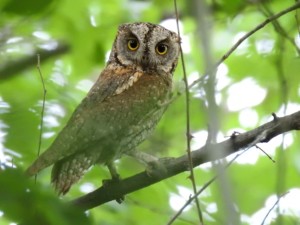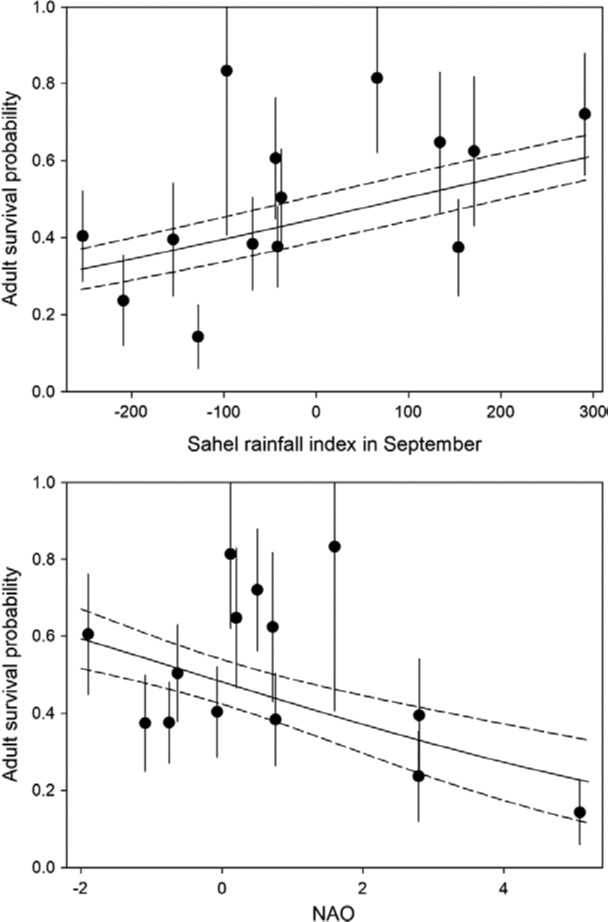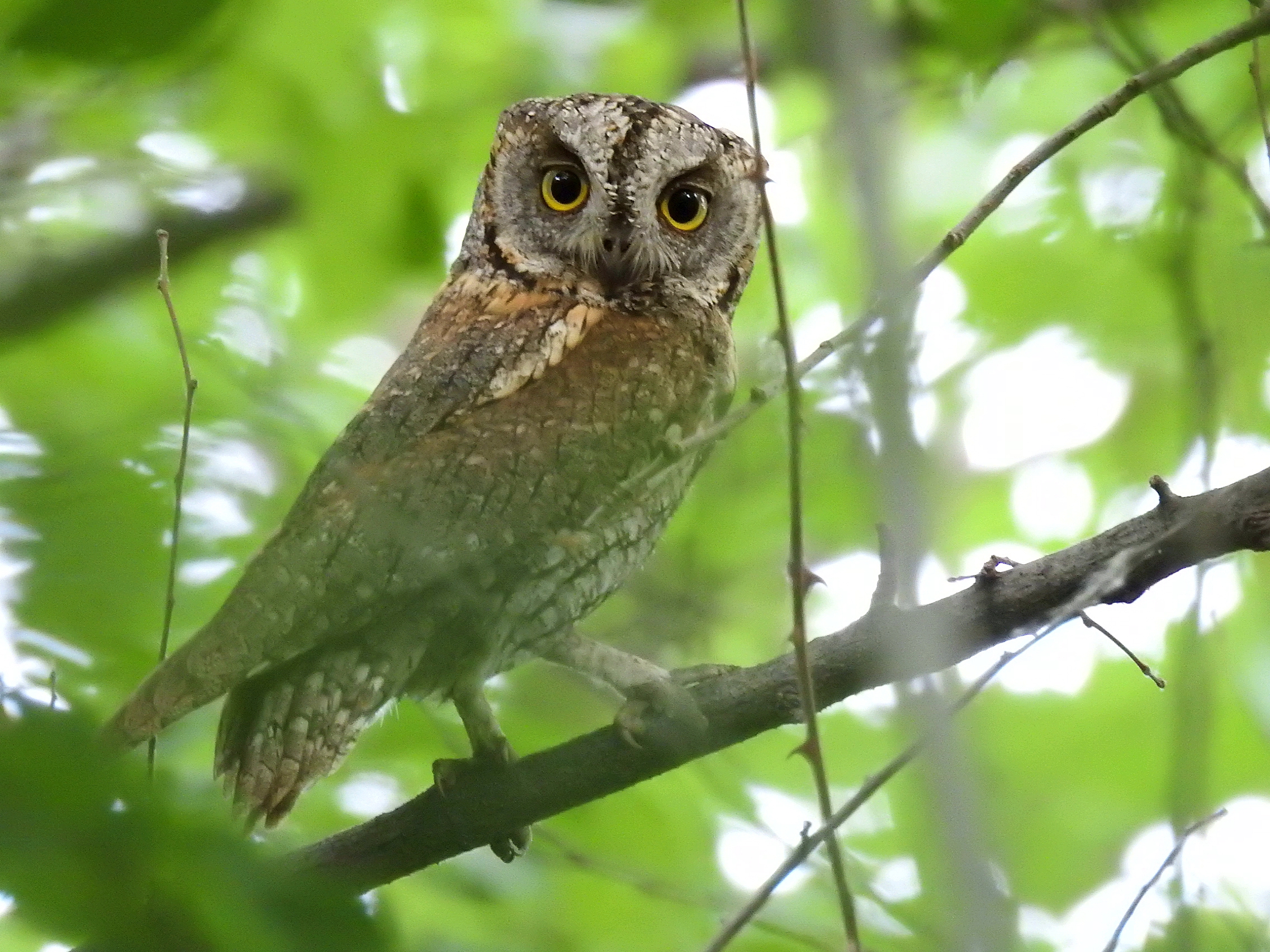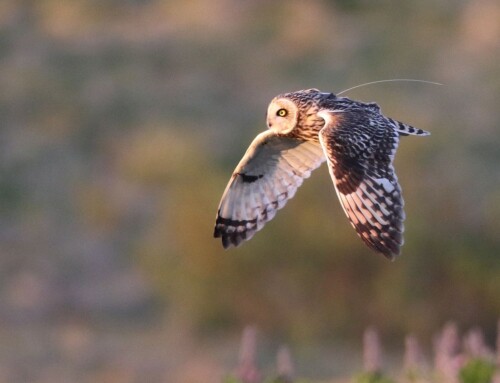 LINKED PAPER
LINKED PAPER
Nectar provision attracts hummingbirds and connects interaction networks across habitats) as a tool for amateur researchers. Barbraud, C., Bavoux, C., & Burneleau, G. 2022. IBIS. DOI: 10.1111/ibi.12995. VIEW
Many populations of migratory birds are in decline (Bowler et al. 2019), but it is extremely difficult to pinpoint the exact drivers of these downward trends. Some birds might face formidable obstacles on their breeding grounds, such as habitat loss or food shortage. Other birds might suffer from problems on the way to their wintering grounds, such as hunting or adverse weather conditions. Disentangling all these factors generally requires long-term monitoring data (Millon et al. 2019). In a recent study, Christophe Barbraud and his colleagues used such an extensive dataset – covering 39 years – to investigate the population dynamics of a migratory owl species, the Eurasian Scops Owl (Otus scops), on the French Oléron Island.
Survival rates
Between 1981 and 2019, the number of Scops Owls on the island increased from 68 to 523 territorial males. However, the population showed some significant fluctuations over this time period. Using a demographic model, the researchers were able to identify the most important life stages that contribute to the ups and downs of this owl species. They noted that increases in population size were due to ‘high survival during the first 2 years of life and to high clutch size, and to a lesser extent to high adult survival or fledging success.’ These results highlight the importance of breeding success and the survival of young birds, which is probably related to the rapid decrease of intensive agriculture (by more than 64%) on the island (Denac et al. 2019). The switch from intensive farming practices to other land use types, such as woodland and shrubs, might have favoured the growth of insect populations. The main food source of Scops Owls. Plenty of food means plenty of young owls.

Figure 1. Two climatic variables – the rainfall in the Sahel region and the North Atlantic Oscillation in winter – had an effect on the adult survival of Scops Owls.
African rain
However, the life of a Scops Owl is not limited to its breeding grounds in France. That is why the researchers also turned their attention to the influence of environmental conditions on the wintering grounds (Telenský et al. 2020). They found a positive effect of rainfall in the Sahel region on the survival of adult birds. This relationship suggests that Scops Owls benefit from wet conditions on their wintering grounds, south of the Sahara. In addition, adult survival was related to the North Atlantic Oscillation in winter. This weather system impacts the amount of precipitation – and consequently plant growth – in the Mediterranean region and North Africa, important stop-over sites for migrating Scops Owls. The population dynamics of these birds are thus dependent on environmental conditions along their migration route and on their wintering grounds. Together, these insights can inform future conservation efforts across the range of the Scops Owl to safeguard its future.
References
Bowler, D.E., Heldbjerg, H., Fox, A.D., de Jong, M. & Böhning-Gaese, K. (2019). Long-term declines of European insectivorous bird populations and potential causes. Conservation Biology 33: 1120–1130. VIEW
Denac, K., Kmecl, P., & Koce, U. (2019). Habitat use of Eurasian Scops Owls Otus scops in an agricultural mosaic landscape. Ardea 107: 119-129. VIEW
Millon, A., Danovaro, C., Printemps, T., Leroux, A. B., Schlaich, A. E., Villers, A., Bourrioux, J.-L. & Bretagnolle, V. (2019). Disentangling the effects of environmental conditions on wintering and breeding grounds on age‐specific survival rates in a trans‐Saharan migratory raptor. Journal of Avian Biology 50(9). VIEW
Telenský, T., Klvaňa, P., Jelínek, M., Cepák, J., & Reif, J. (2020). The influence of climate variability on demographic rates of avian Afro-palearctic migrants. Scientific Reports 10: 1-11. VIEW
Image credits
Top right: Eurasian Scops Owl (Otus scops) | Kakhaber Gogolashvili | CC BY-SA 4.0 Wikimedia Commons
Blog posts express the views of the individual author(s) and not those of the BOU.
If you want to write about your research in #theBOUblog, then please see here




